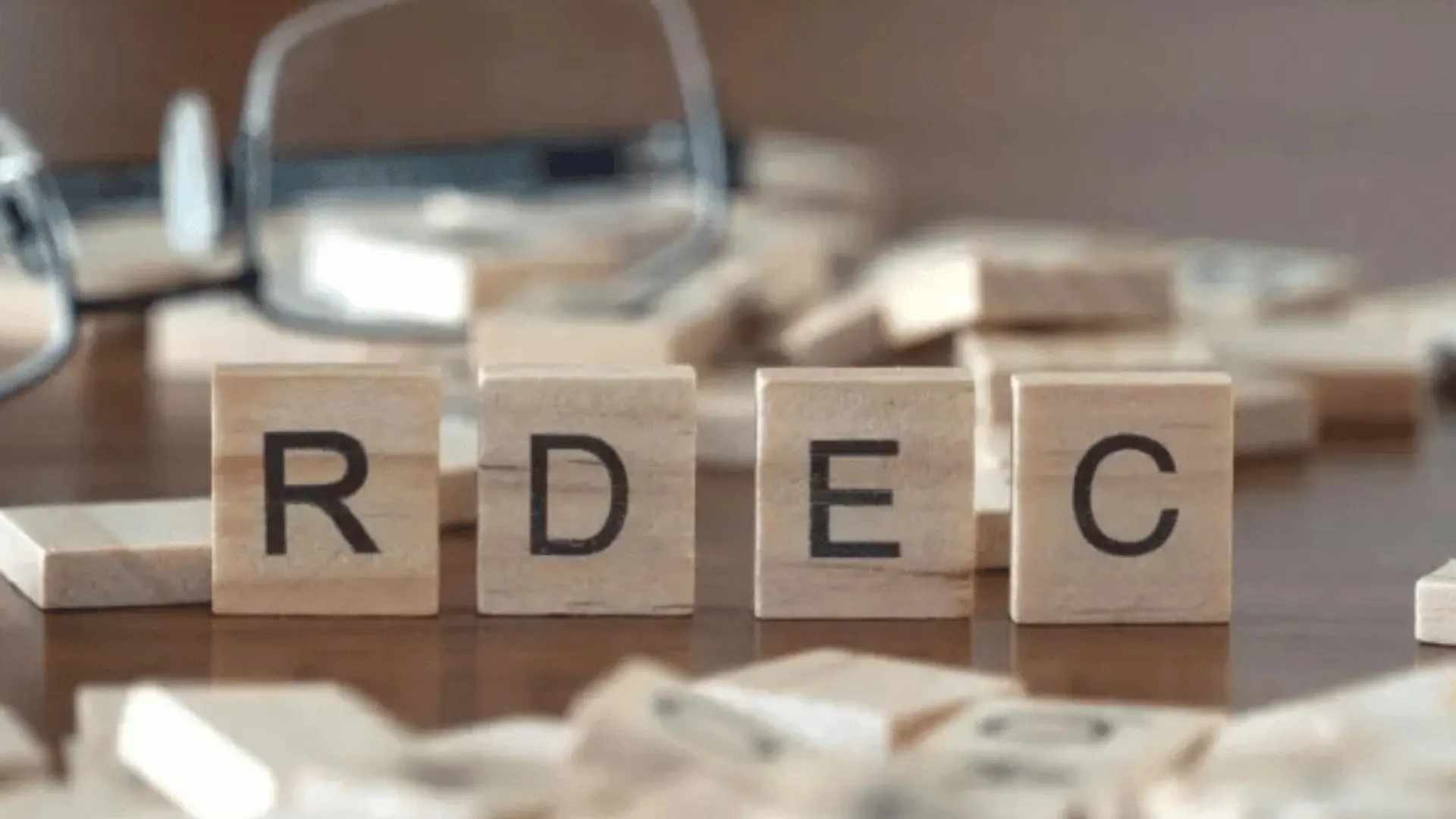14/10/2025
What is a Research and Development Expenditure Credit Scheme (RDEC)?
Learn how the RDEC scheme supports larger companies and those not eligible for SME relief. Easy R&D explains the benefits and simplifies your claim process.

14/10/2025
Learn how the RDEC scheme supports larger companies and those not eligible for SME relief. Easy R&D explains the benefits and simplifies your claim process.

When businesses think of R&D tax relief, they often picture the SME scheme designed for small and medium-sized companies. But what happens if your business is too large to qualify, or if state aid rules exclude you from making an SME claim? That is where the RDEC scheme comes in.
The Research and Development Expenditure Credit (RDEC) scheme provides an alternative way for companies to claim tax relief on their innovation costs. It plays a vital role for larger organisations and those carrying out subcontracted or subsidised R&D, ensuring that they still receive support for investment in advancing science and technology.
The RDEC scheme was introduced to ensure that large companies, which were previously excluded from R&D tax incentives, could benefit from financial support. It works differently from the SME scheme. Instead of reducing your tax liability in the background, RDEC is shown as an “above the line” credit in your company accounts. That visibility makes it particularly valuable for finance teams and stakeholders who want to see the impact of R&D relief clearly reflected in reported profits.
The credit is taxable, but after corporation tax is deducted it still provides a real cash benefit. Depending on your circumstances, it can be used to reduce your tax bill, offset other liabilities, or provide a cash payment.
This scheme is available to:
This makes RDEC a versatile option that ensures innovation continues to be supported across the economy, even where the SME rules don’t apply.
For many companies, the most important benefit is the ability to claim tax relief on qualifying R&D expenditure even when SME relief is unavailable. But the scheme also has other advantages.
One of the most significant is visibility. Because RDEC is recorded above the line in your profit and loss account, it directly improves your reported profit before tax. That can influence performance measures, support investment decisions, and demonstrate the value of innovation to shareholders.
Another benefit is flexibility. The credit can reduce corporation tax due, offset other HMRC liabilities such as VAT or PAYE, or result in a cash payment. That flexibility can help smooth cash flow, particularly for businesses running long-term R&D projects where costs are high and returns may take time to arrive.
For larger organisations, the RDEC scheme can deliver a meaningful financial return on their qualifying R&D investment. This support can help maintain momentum on future projects and reinforce a long-term commitment to innovation.
The categories of qualifying expenditure under RDEC are broadly similar to those in the SME scheme. They include:
Each cost must be directly linked to the qualifying activity, and businesses must keep detailed records to support their claims.
In recent years, HMRC has placed a greater focus on compliance across both SME and RDEC claims. That means companies need to be precise in describing the scientific or technological advance being sought, the uncertainties faced, and the systematic process followed to resolve them.
For larger organisations, the complexity of projects and the number of stakeholders involved can make claims more complicated. Multiple teams may contribute, costs may be spread across different divisions, and subcontracted work can add another layer of detail. Ensuring accuracy is therefore essential, not only to secure the maximum benefit but also to reduce the risk of HMRC enquiry.
At Easy R&D, we work with businesses of every size, from ambitious SMEs to large organisations with complex R&D projects. Our team combines tax expertise with a practical understanding of how to present RDEC claims clearly and effectively.
What sets us apart is our ability to simplify the process. We know the rules and requirements, but we also understand the reality of running large projects where documentation may not always be perfect. By working closely with your finance team and technical leads, we identify the activities and costs that qualify and prepare claims that meet HMRC’s standards. We’ve helped clients secure millions of pounds in R&D relief, including through the RDEC scheme, and we continue to see businesses use these credits to reinvest in people, facilities, and new ideas.
The RDEC scheme remains in place for companies with accounting periods that began before 1 April 2024, but it is being phased out as part of the government’s move to simplify R&D tax relief. For accounting periods beginning on or after that date, a merged R&D scheme has replaced the previous SME and RDEC structures.
This new single scheme follows the RDEC framework, meaning that the credit continues to appear above the line in company accounts and remains taxable. However, it now applies to a broader range of businesses, creating a more consistent approach to how R&D relief is calculated and claimed. SMEs that meet the government’s definition of “R&D intensive” will still be able to access a more generous level of support under a separate R&D Intensive Scheme.
Although the RDEC scheme will no longer apply to new accounting periods, it remains relevant for claims covering earlier ones, and its core principles continue to underpin the merged system. Transparency in accounts, strong record-keeping, and accurate technical evidence are still essential to a successful claim.
As compliance standards tighten, preparing a detailed and well-supported claim, under either the existing RDEC scheme or the new merged regime demonstrates that your business takes R&D activity seriously and is committed to claiming responsibly.
The RDEC scheme enables larger companies, and those outside the SME scheme, to benefit from government-backed support for innovation. It can improve cash flow, increase transparency in financial reporting, and acknowledge the work involved in research and development activity.
If your business is carrying out R&D but is not eligible for the SME scheme, the RDEC scheme could be the key to unlocking valuable relief. Easy R&D makes the process simple, guiding you from eligibility through to claim preparation with expertise and personal support.
Contact Easy R&D today to find out how the RDEC scheme could benefit your business.

Written by: Laura Velasquez
Marketing Manager focused on Tax Incentives for Innovation
01708 925 641

For more information on how Easy R&D can support your business, please contact us directly.
Get in touchEvery customer and every claim we work with benefits from our deep expertise in how HMRC manages R&D tax credit applications.
If you'd like to learn how R&D Tax Relief could support your business, our team is here to help you.
Stay informed on the latest R&D Tax Relief updates, gain exclusive insights from our experts, and receive industry-specific tips by signing up for Easy R&D’s newsletter.